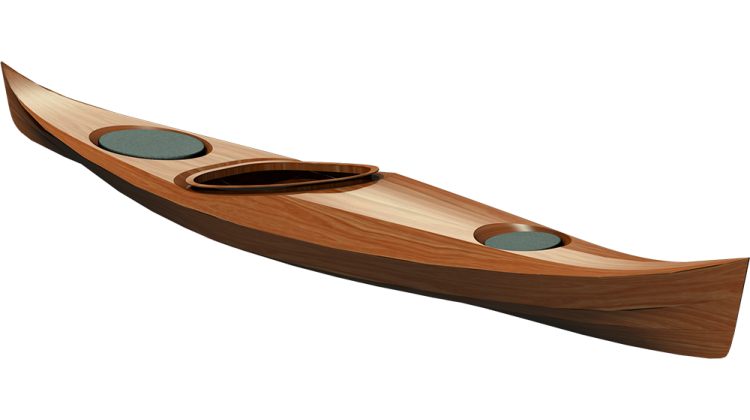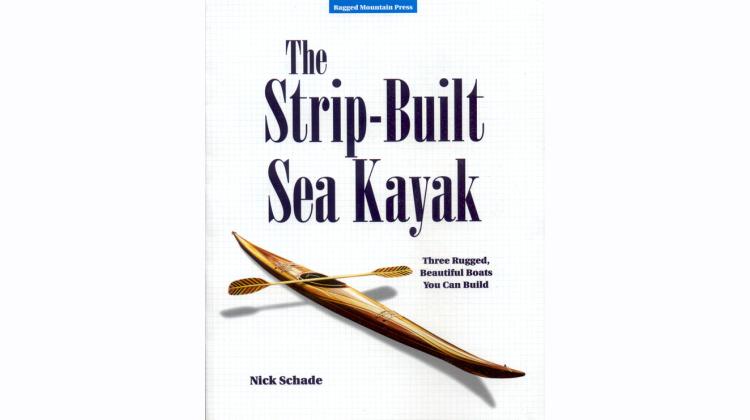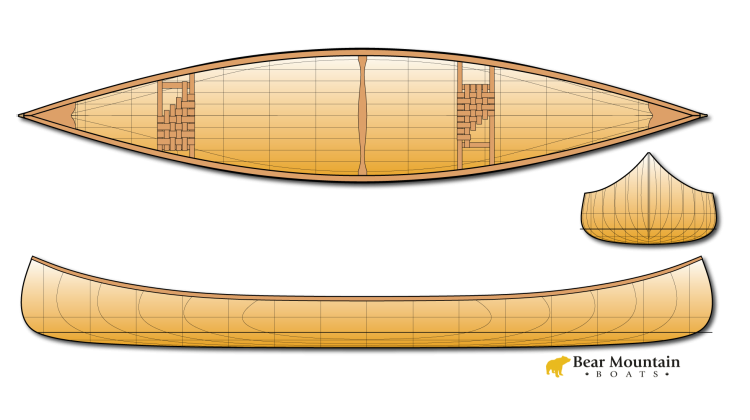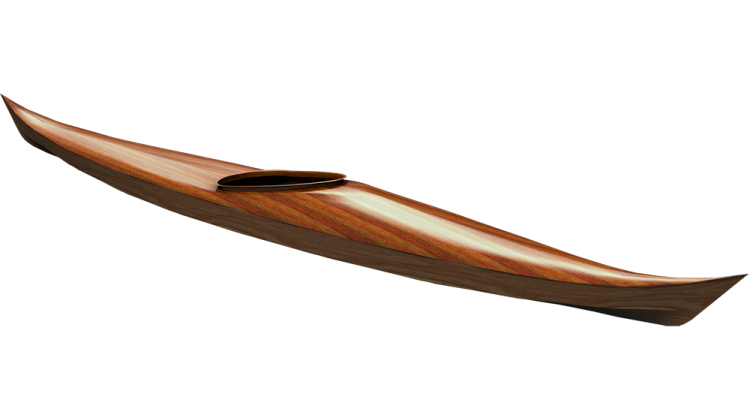In this episode of the Guillemot Kayaks Workshop, Nick Schade and Bill are working on assembling the Petrel Play SG, a stitch and glue sea kayak. They continue to work on the deck, focusing on the details such as the cockpit and hatches recesses to ensure a clear path for water across the deck. Although the process may seem extensive, Nick emphasizes the importance of attention to detail to provide a thorough demonstration of the process. They assemble the deck panels, form two and form three, using wires to secure them before gluing. As they work on assembling the cockpit and hatch recesses, they cut, shape, and sand the plywood pieces to fit smoothly. Additionally, they use a heat gun to help shape the plywood and reinforce the hatch rings with strapping tape before gluing them into place. Nick acknowledges the challenges of fitting the recesses and provides varying tips on how to achieve a proper fit. He also discusses the benefits of creating the recesses for the kayak, emphasizing the comfort and functionality it provides.
Hey, welcome back to the Guillemot Kayaks Workshop. I'm Nick Schade, and Bill and I are working on the Petrel play SG. Introduction. The stitch and glue sea kayak, the Petrel play, is available as a kit from Chesapeake Light Craft, and we're building that Chesapeake Light Craft kit. In the last episode, we started putting together the deck, and in this episode, we'll continue working on the deck.
Primarily, what we'll be working on is getting the details of the deck. That includes the cockpit and the hatches, so the cockpit and hatches are all recessed from the deck. This makes it so the water has a clearer path to go across the deck; not as much stuff sticking up. With the cockpit, it makes it so the back of the combing is a little bit lower, making it easier to roll and it looks cool.
We're going to go through the process of assembling those recesses. We will not finish stitching up the deck this episode; we'll finish it up in the next episode. So actually, this is the second episode on, I believe, it's day four of the build. So even though we're like nine episodes into the process now, we're only like four days into the process. It may look like this is taking a long time, but I'm just trying to be as complete as possible with these videos to show you as much detail of the process as possible.
So, again, we're going to work on stitching up the deck, and primarily, that will be assembling the cockpit recess and the forward hatch recess. So let's get to it. Okay, so we've got the side panels assembled now, and we're ready to kind of assemble the deck. I want to grab the book right there. Again, looking at the manual, we've gathered all the deck pieces, which are the side panels, forward deck panels, or the middle panel, the aft deck. Then there's also these recesses that we'll be working on. But first, we'll just address the body of the deck itself. On the hull, we had the bottom panel that we stitched together along the center line. Right. Most of this we don't have a center line stitch, but we do on the very forward pit of the bow.
So we've got these pieces, which constitute that forward part of the bow, and these we will end up opening up just like the bottom of the boat. So we're going to end up stitching along this long edge here. Just to review how these go together, just like we did the KE line, we're going to run wires through those stitch holes on both sides. Now, I've bent the wire and once you bend the wire, it doesn't go through easily. Just make sure since we put the protective epoxy coat on here, some of these holes are plugged up, and so I'm just going to go ahead and open those up while I have my tool in my hand.
This shorter edge gets wired together, and remember, we're going to take these pieces, so hold them 90° to each other and then give them a twist with a little bit of gap left in there. We don't need to make it super tight, but we want a good twist so it doesn't come undone, and we'll go ahead and do that whole edge twist. Oh, did I drop? You know what? I thought it was a scrap. Bucket. So we have this bow panel all the way out at the front. This is going to end up opening out just like this, and so that'll end up out here. We want now to grab form two or no, this is form three, so it's got three little notches in it.
And on this mid-deck panel, there's a spot with double stitch holes. So right here, here and here, here here and here. So you see the double stitch holes; this piece fits down onto this form and gets pulled down tight against this surface. So, like we did on the bottom, we're going to take and run some wires; make little U-shaped wires, run them down through the double stitch holes from the inside towards the outside. So, all three of those pairs of holes. So now we've got wires sticking out of the back. So we’ve got these wires sticking out here, coming through those double stitch holes, and we're going to take this and put the form in between those double stitch holes and wire them up into the corners here. This panel is not actually flat; all the other panels on the boat are flat; this has got a little bit of non-flatness, too, but the front deck has a little bit of an arch to it. This needs to be pulled up into here here. We need to be careful that we don't break this piece because this helps us to find the curve we want so that curve is allowing for a little more footroom yeah and sheds water a little bit better; looks better.
So I'm going to twist the corners down, the sides down here; get started those in place again, pull things tight, then twist. So this one will get wired through there, pull it tight, and get it. Just have something to push on, and then again pull that wire tight and lock it in, so you see it conforms to that shape right there. So we’ve got a little bit of bend to it, so that's going to go out here towards the front of the boat and then likewise, we have on the back panel here, form four.
There's another set of double stitch holes right here; had a little bit of epoxy drip there. Let's address that, so we had some epoxy drip through or drip over the side here, and it glued to our cardboard a little bit. We want to get rid of that. It happens to cover our double stitch hole here; here's one of the double stitch holes, and there's another one right under that little piece of cardboard. So we're going to try and take that off. You could just try scraping it off with the scraper. What'll probably be a little bit more effective is if we use a heat gun, heat that up and then scrape it off really good and hot, so that cleaned up nice, clean up those holes. Make sure these are all clean. Now we will take this piece and fit it in underneath. So again, just use some just U-shaped wires down through those double stitch holes, open these up so we've got the form in between those and then wire them into the corners.
Use pliers to pull that wire through; okay. So, you want to get all the slack out of that. Get it right down; yeah, you need to go that way a bit. Go crossing, out of 90, get started, yeah, it doesn't need to be super tight on the corners because the pressure of the middle is going to draw it down all right, so now we've got the middle one still in there. And again, just having a little bit of something to push down, you want to just push down here. Yeah, pull this tight, get all the slack out of it, get that nice 90° angle and give it a couple twists to lock it in place. See what's that look like; let go, nice and tight?
All right, so that's staying; so perfect. So that's form two and form three, and now this piece will go back here someplace. So, the cockpit hole; cockpit opening here ends up being on the lower edge, so over here on that side, and this will fit right down into here someplace, and we'll take this one and again on the lower edge there, and so now we want to get this form lined up with these double stitch holes right here. Oh, okay. Oh, I see. I see. I see like that, so right here, there's some double stitch holes, and then up here, there's some double stitch holes right there.
And so this will come to about that point and like we did on the hull, we're going to take and put stitches through those double stitch holes out to the form so, from the inside out on all four points here, that will start to get the alignment of where everything is supposed to be, and remember we want to pull these down tight towards the forms; again, pull all the slack out of the wire. Get it tight in there and then give it a twist to lock it in place; good, so all right. And likewise, back in these spots back here.
All right, so those are the two primary forms. Now we've got form two, two notches, and form one, so these go up at the bow of the boat. Let's see. Double stitch holes; so that’ll go there. And this one, we actually hold off on putting this one in until a little bit later. So same drill; wires through the edge of the panel into the top of the form. Okay so this piece will end up going in here in between these two other pieces, and let's see, you see the double stitch holes here. All right, yeah. It doesn't seem to have a double stitch hole there, but it goes this um, the second one back from the bow of the boat and goes right in there. And so, we can drill a double stitch hole there.
All right, let's just drop this out for a second so we don't have to deal with it, and we'll, we'll loosely wire these two pieces into the top of that form, just like we did the other ones; okay. Loosely, you say, though, yeah, we're not going to cinch it up until we get the bottom panel in there. So, now we have something to support this. We'll just loosely, in a couple spots, wire this in place. So, right here at this end just boop boop boop boop; okay. Just so we sort of start to define all the panels and where they're located. So, we're not going to pull this tight yet; not super tight yet, just get it started by standing and putting the epoxy on the outside. We have buggered up a few of these holes; they're easy enough to clean out.
We're not cinching things up just yet; we're just trying to get the placed parts in the places they need to be. The last one to do is the stern, and let's just grab a wire; I'll grab a wire, and we'll take and loosely wire in a couple of these just so it starts to take its shape. So, we've got a couple more bits that are going to go in here. This is where the cockpit is, and then around the back of that, we have what creates the recess for the cockpit, goes back in here. So, this still has these parts that we'll be using later. We can take this piece out, and so it's got the tabs holding it together; just break those tabs off and set that aside for future reference.
This is going to end up going in here, but this is going to go wrapped around the back. We've got a little tab here; the square edge on here; just cut that tab right off. And then the other end is a couple more of those tabs, so bevel side in this case; it's going to be on the inside of the boat. So bevel side up with this side; again, there's a bevel on this outer edge that'll be bevel side up. This piece needs to bend around the side of this. Something like that, and that will make the recess.
So, we’ll do that by starting at the very back; this might be easier to do the stitches coming up from the underside so we can see everything. Take these wires; pull them tight, get a twist in them, and so now we want to come down around the sides, twisting as wiring them up as we go. Want me to do some; sure, got and again, I think it's easier to have the wires coming in from below, which we could just, let's do this; let's be efficient about it and just shove some wires through here first, a couple pairs of holes on either side. So, don't just get them through there; that's so. I have a couple tabs on the edge of this; we just want to cut those off.
I'm not worried about the tabs inside the hole; just around the outer edge, just trim those back. There's a tab over here; no, it seems to be gone; all right. Now, we'll flip this back over, and we want this piece to fold down. So, we'll take and hold it down, get our wires situated here. Getting ready to give them a twist, give it a nice tug, and tighten them up. We're trying to get these pieces even along that edge so it pays to grab it farther out than where your wires are. Get it cinched down onto there, kind of use your hand as a clamp; yep, pull the wire tight, give it a twist. Oops, I was going to go from the other side. Let's flip it over briefly, and while I have my hand here.
So, we've got most of the wires placed. Things still aren't aligned right, so if you see this point down here, it should nestle right into that, and there and likewise over here, that should nestle into that, so we might need to shift the whole thing slightly to one side; that may have overdone it; now, that looks good.
So, we have an even gap on both sides; mine's about a 16th or so. Yeah, this is about a 16th there; okay. So, now we can work on cinching these up a little bit more. So, get them crossed, pull on them; if you've got too much pulled out, it can pay to move that crossing point. Pull and twist, pull and twist. This is sort of an assembly for the cockpit area with that recess at the back. It will end up in the boat, and we'll eventually stitch all the way around here. But I want to sort of lock this assembly in place, having it look the way we want it to look.
If you look on the inside here, we want a nice tight seam where these panels meet, tight corner to corner, just like this; this will be a process of spot welding on the backside and the underside, and working our way around getting those all nice and tight all the way around, so it's a really tight seam there and looks nice. So, I'm going to get it tight and feel underneath there that it's nice and smooth. Try not to glue your fingers in and a couple dots along here just to get that solidified and then we'll a little spritz, hold that for a second.
So, on this side, that's a nice tight seam right there. Now we'll work our way around that, and I'm just putting a little drop into that seam, let it soak in a little bit, spritz it, start lining it up down here, so you're just using your fingers on the back to feel. Yeah, feel that it there's no step there; yep, and here this last piece should basically fit flat in there, so it's untwisted relative to the bottom panel there. So, this is fitting in like that tight; I'm going to get some spots of glue in here and give it a spritz and go ahead and hold that in place.
So, on this side, we've come all the way around from here all the way down there, and it's all nice and tight. And now, Bill gets to do the other side, try to, get it out of alignment, so you see what that feels like; oh, okay, yeah, because it's in perfect alignment right now. All right, let's just get those puzzle joints cleaned up, and to test fit all of them, okay, and then we will go ahead with the beginnings of assembly. So you just want to get all the fug off, yeah.
Out of the puzzle joint area, and there's some nubbins on the inside surface of these that can be knocked down. All right, that should be it; it's just a matter of making it fit, okay. And we will want to test all the puzzle joints before gluing it together, start up, make sure we go in there, getting closer, there it is, there you go.
Beautiful, all right, so that one works. Mind your bevel, mind your bevel. Will is this typical that you have to shave a little off. Yeah, and you know it's mostly it's just getting rid of the fuzzies there; they're what sort of interfere, but it's a tight fit, and you know it's wood, so yeah, yeah, so it's prone to a little expansion, yeah, what not; all right.
I just didn't know if I was pressing hard enough. Yeah, there we go; have you tried this one into that one yet? I have not; okay, but I'm going to take up the pot to do that, I think; okay, yeah all right, so this round one went off without much fuss, and so, the next thing will be getting that oval hatch recess in there. And we'll do that in the next episode. So, let's call it a day and continue with that in the next episode.






